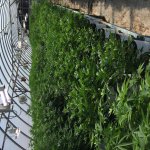Arnold.
Active member
But first do you honestly need Mg. Soil and/or compost usually provides plenty
I was wondering the same.
Need the soil results from the lab first. I'm not mixing anything atm, just mixing idea's, trying to put the puzzle together.
Good info on the nitrate.


 Gonna sub now before this thread turns 500 pages long!
Gonna sub now before this thread turns 500 pages long!

 [/quote]
[/quote]
